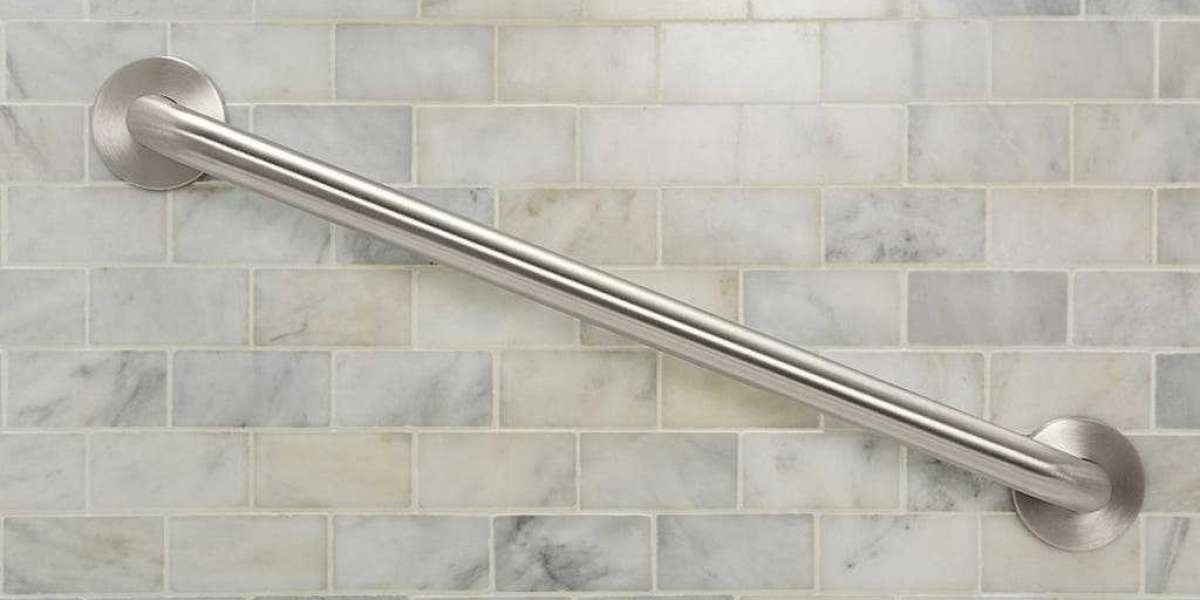Aging comes with challenges, and one of the biggest concerns is safety at home—especially in the bathroom. Slippery floors, poor balance, and limited mobility can turn a simple shower into a dangerous task. That’s where handicap grab bars come in. These essential support tools provide stability and reduce the risk of falls, making bathrooms safer for seniors and individuals with disabilities.
But here’s the catch: installing grab bars isn’t as simple as just drilling them into the wall. Many people make critical mistakes that can compromise safety rather than improve it. So, before you grab that drill, let’s talk about five common mistakes to avoid when installing grab bars at home.
- Choosing the Wrong Type of Grab Bar
Not all grab bars are created equal. One of the biggest mistakes homeowners make is picking the wrong type of bar for their needs. Bathroom handicap grab bars come in different styles, materials, and weight capacities, and choosing the wrong one can lead to accidents.
Common errors include:
- Selecting a decorative towel bar instead of a sturdy grab bar.
- Opting for suction-cup grab bars, which aren’t reliable for long-term support.
- Installing a grab bar with a low weight capacity that doesn’t support the user properly.
Solution: Always go for ADA-compliant, stainless steel grab bars with a textured surface to prevent slipping. Also, ensure they can support at least 250 pounds for maximum safety.
- Incorrect Placement of Grab Bars
Placing grab bars in the wrong spot is like installing a seatbelt on the car’s roof—completely useless! The positioning of grab bars plays a crucial role in providing the right support.
Common placement mistakes:
- Mounting them too high or too low, making them hard to reach.
- Installing grab bars only in one area, ignoring other high-risk spots.
- Placing them at awkward angles, making it difficult to grip securely.
Solution: Follow proper ADA guidelines for grab bar placement:
- In the shower: Install bars vertically near the entrance and horizontally along the back wall for better stability.
- Next to the toilet: Place a grab bar at the side and behind the toilet for ease of movement.
- Near the bathtub: A vertical bar at the entrance and a horizontal one inside the tub work best.
Strategic placement ensures users have support exactly where they need it.
- Failing to Secure Grab Bars Properly
A grab bar that isn’t securely mounted is worse than not having one at all! If it detaches when someone grabs it, the fall could be even more severe.
Common installation mistakes:
- Using weak drywall anchors instead of proper mounting hardware.
- Attaching grab bars to hollow walls without reinforcement.
- Relying on adhesive strips or suction cups instead of screws.
Solution: Grab bars must be anchored into wall studs or installed with specialized wall anchors that provide strong support. Use stainless steel screws and test the bar’s stability before relying on it.
For homes where wall studs aren’t accessible, consider mounting grab bars with a secure backing plate to distribute weight evenly and prevent detachment.
- Ignoring Aesthetic and Functional Balance
Many homeowners worry that bathroom modifications for seniors will make their space look like a hospital. While safety should be the top priority, functionality and aesthetics don’t have to be sacrificed.
Common aesthetic mistakes:
- Choosing industrial-looking grab bars that clash with bathroom decor.
- Installing excessive grab bars, making the space feel cluttered.
- Not considering ergonomic design, leading to an uncomfortable grip.
Solution: Today’s market offers stylish grab bars that blend seamlessly with modern bathrooms. Consider:
- Matte black or brushed nickel grab bars for a sleek, contemporary look.
- Integrated grab bars with towel racks for dual-purpose functionality.
- Curved or wave-shaped grab bars, which add a decorative touch while maintaining usability.
A well-designed grab bar setup not only enhances safety but also maintains the beauty of your bathroom.
- Skipping Routine Maintenance and Inspections
Think of grab bars like seatbelts—you wouldn’t trust one that’s frayed or loose, right? Yet, many people install grab bars and never check them again. Over time, wear and tear can weaken even the sturdiest installations.
Common maintenance mistakes:
- Failing to check for loose screws or rust.
- Ignoring water damage that weakens the wall structure.
- Not replacing grab bars that show signs of wear or bending.
Solution: Make a habit of inspecting grab bars every few months:
- Tighten loose screws.
- Clean the surface to prevent grime buildup.
- Check for rust, especially in humid bathroom environments.
- Replace grab bars if they become damaged or unreliable.
Proactive maintenance ensures grab bars remain a dependable safety feature for years to come.
Final Thoughts
Installing handicap grab bars is one of the smartest moves you can make for a safer home. But doing it wrong can lead to serious risks instead of added security. Avoid these five common mistakes—choose the right grab bars, position them properly, secure them correctly, balance function with aesthetics, and maintain them regularly.
By taking the time to install grab bars the right way, you’re not just adding a home improvement feature you’re investing in peace of mind, independence, and safety for your loved ones.
Need help picking the right grab bars for your home? Consult a professional or explore modern, stylish options that make safety look good. After all, staying safe shouldn’t mean sacrificing style!




